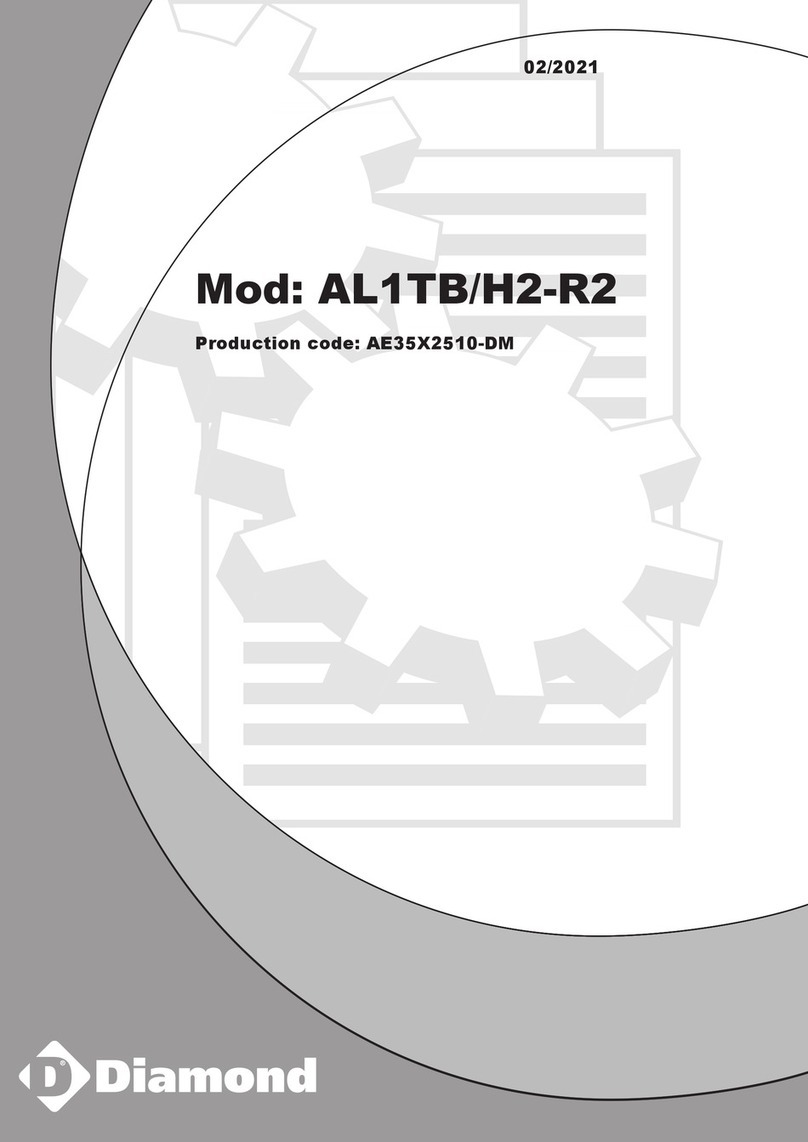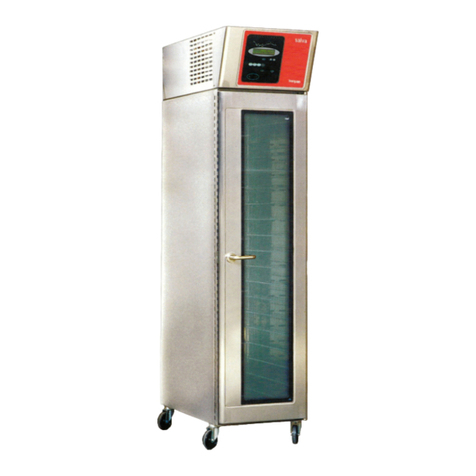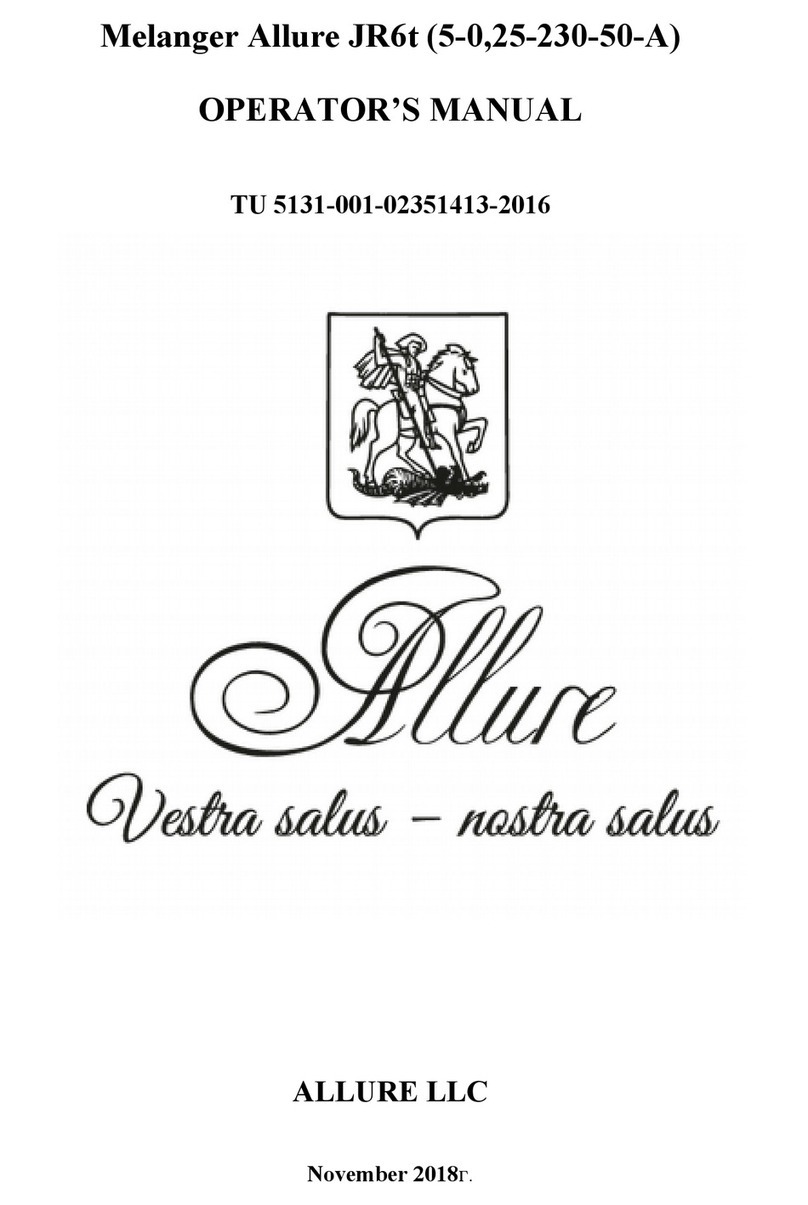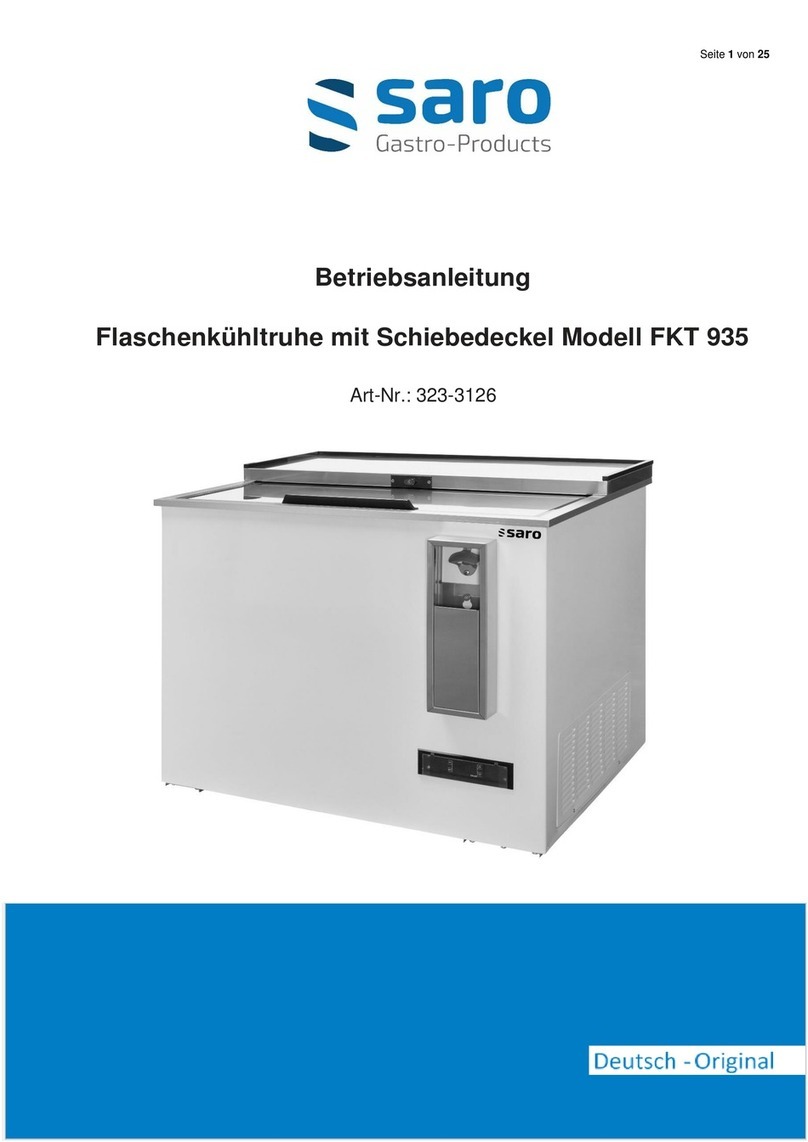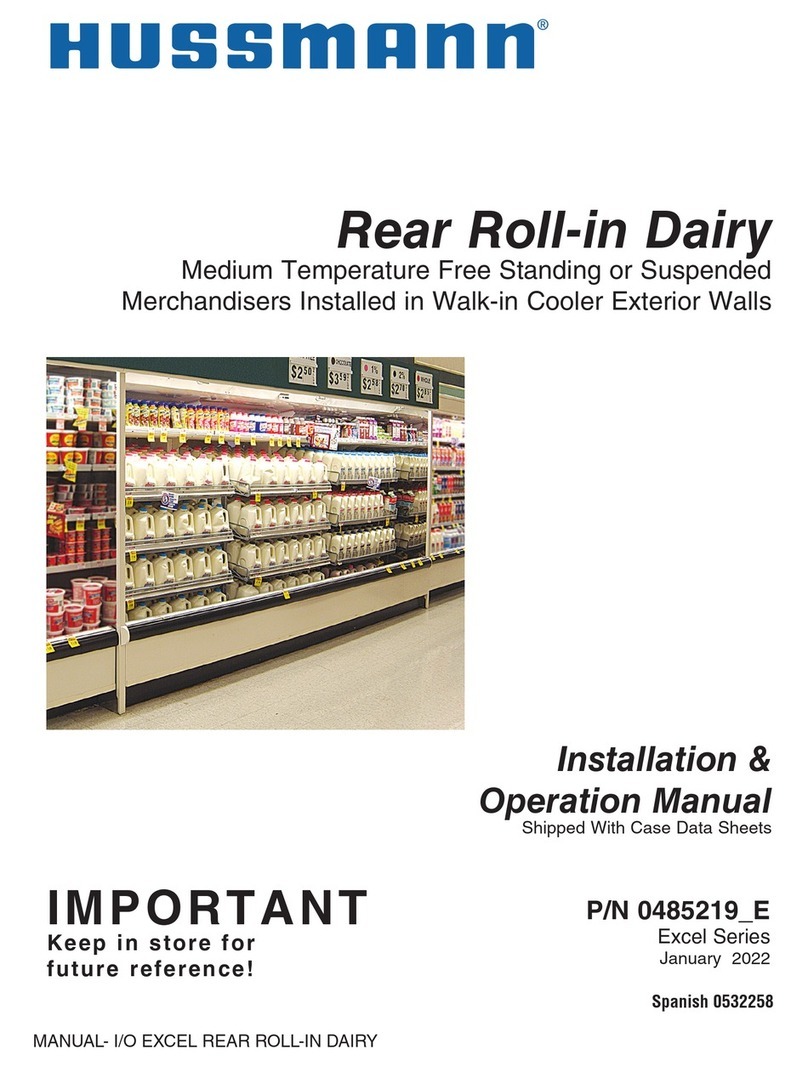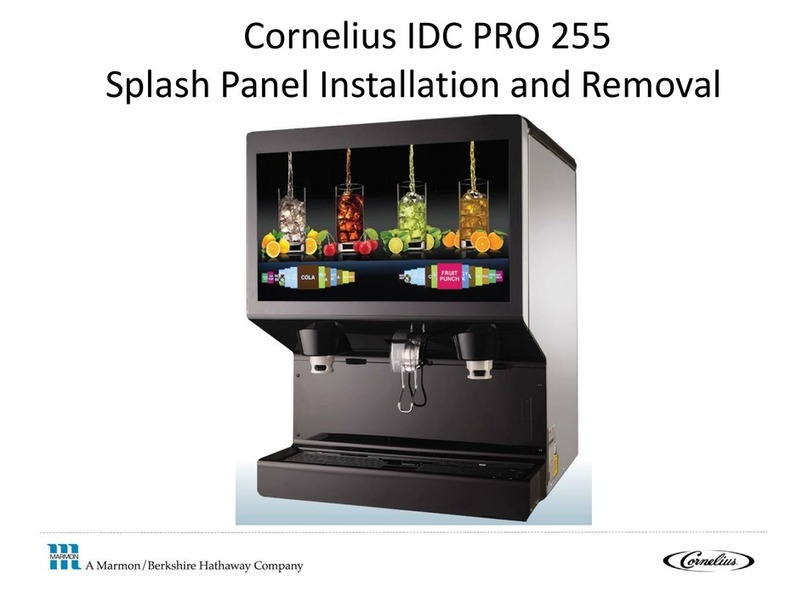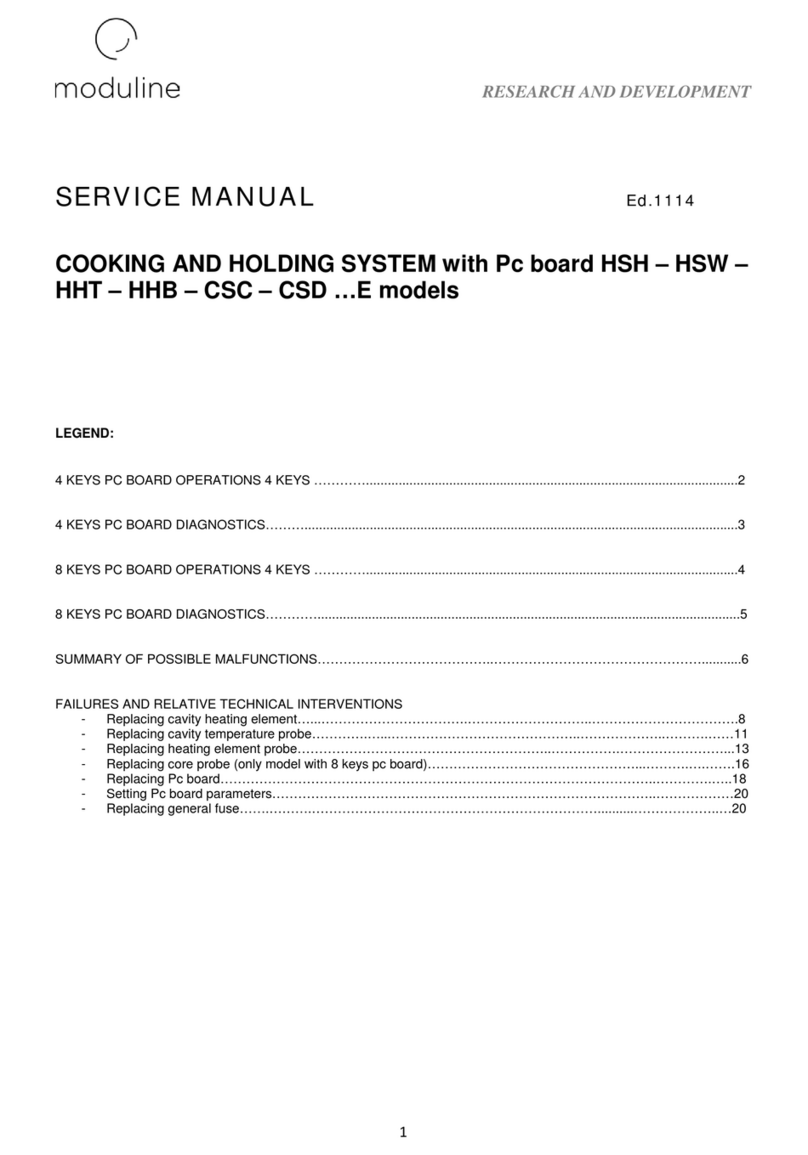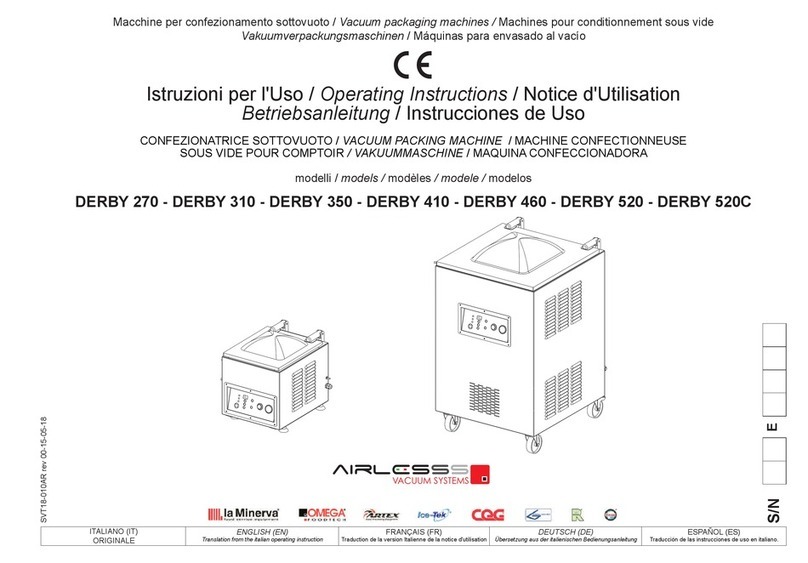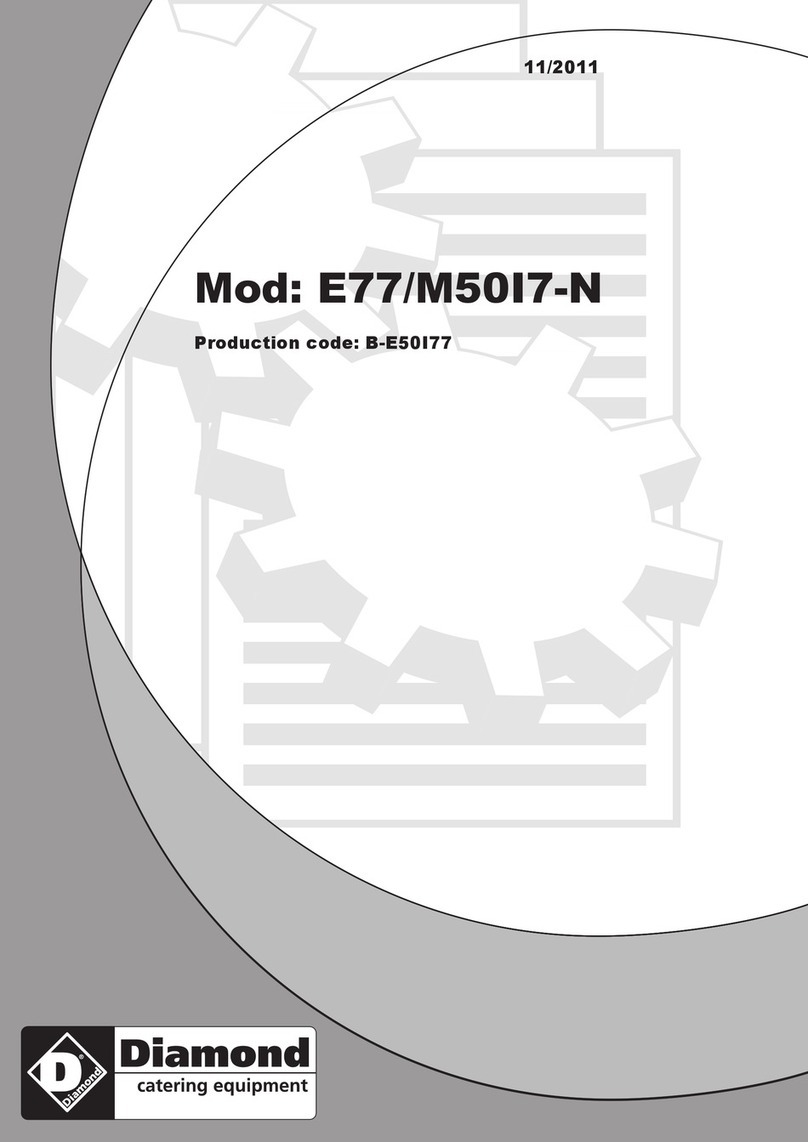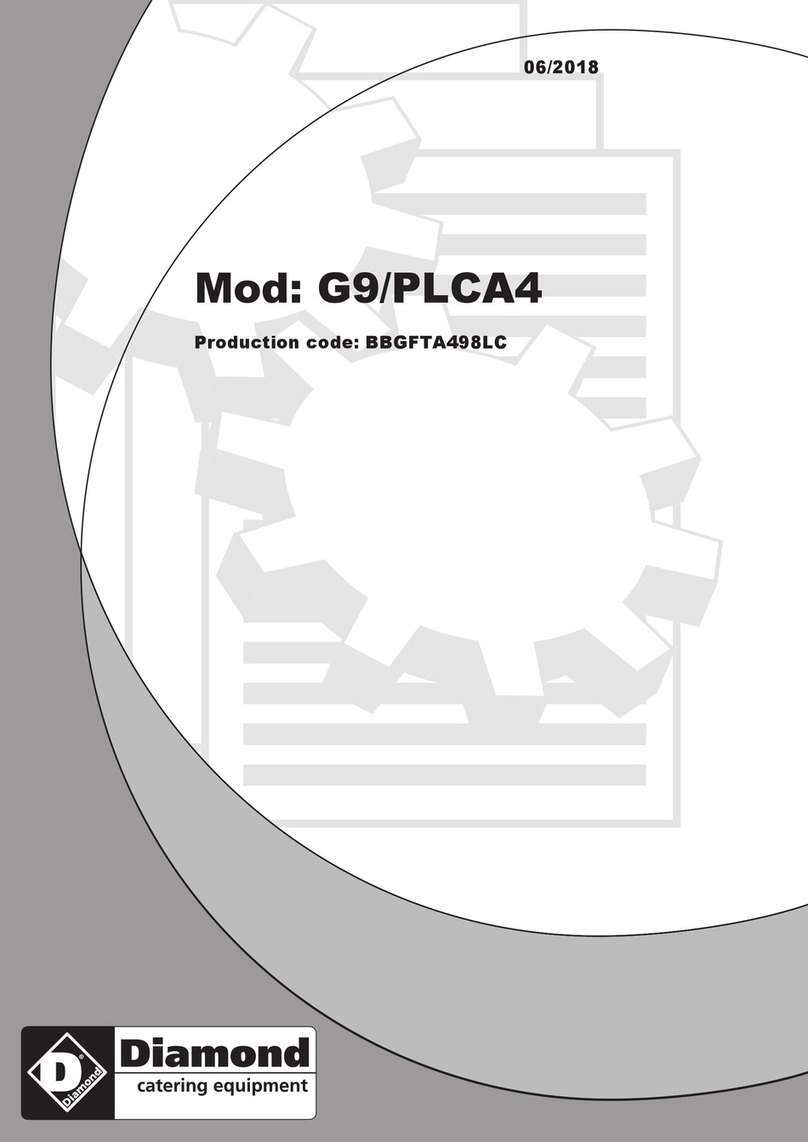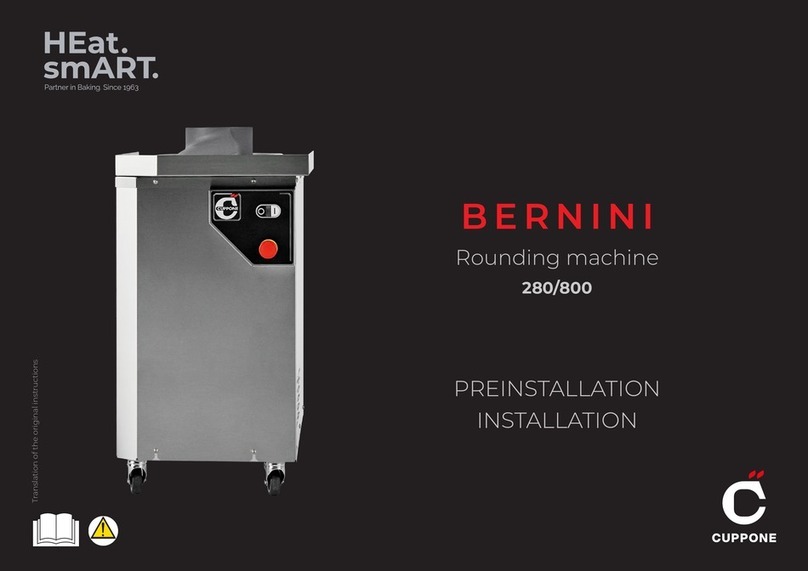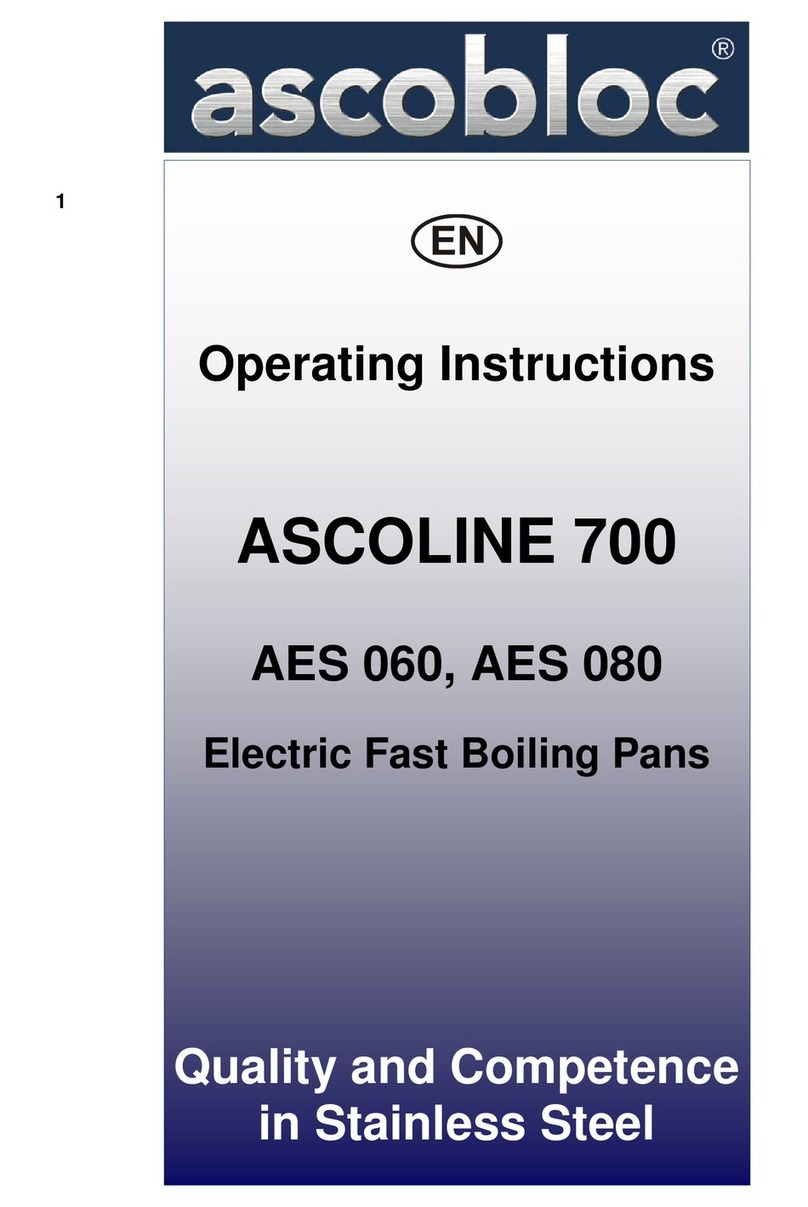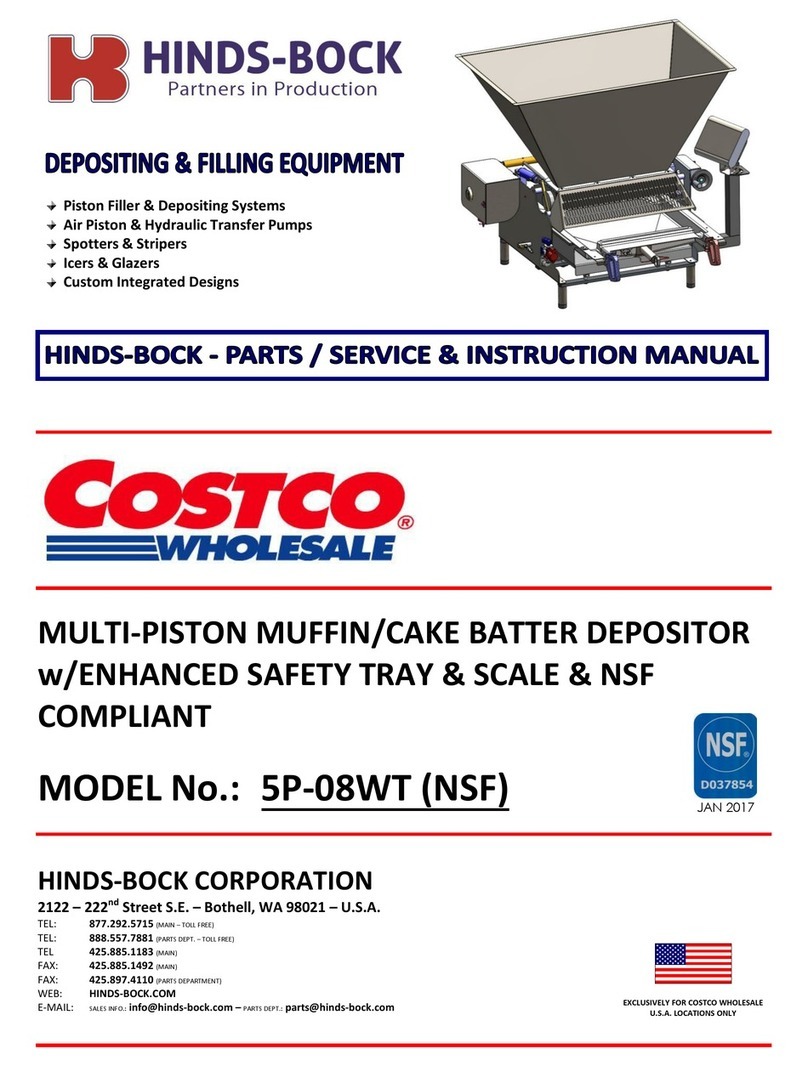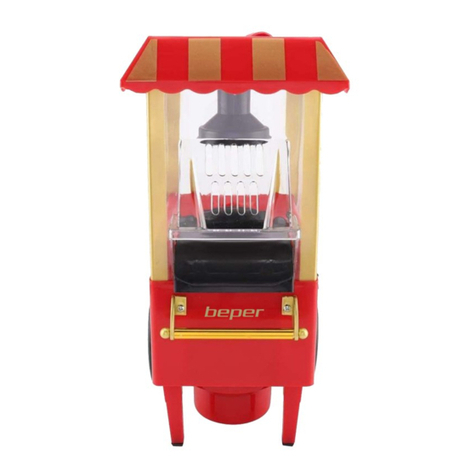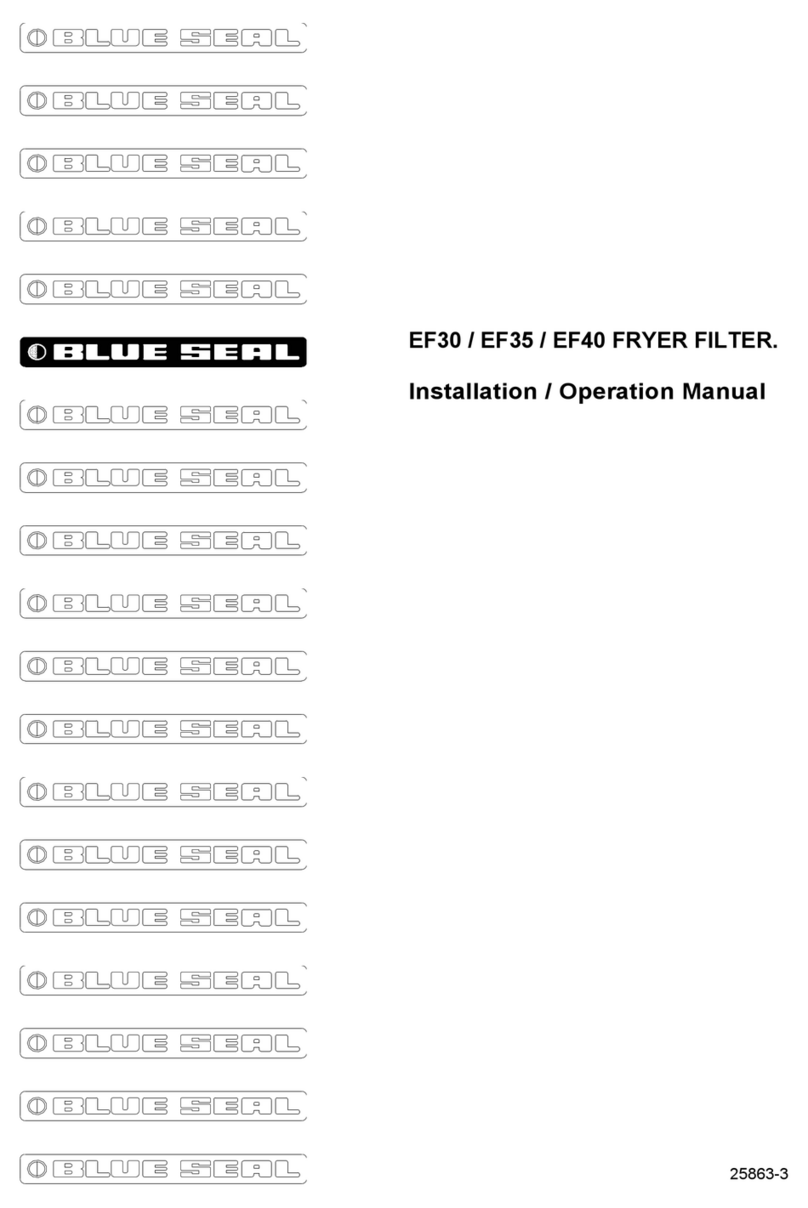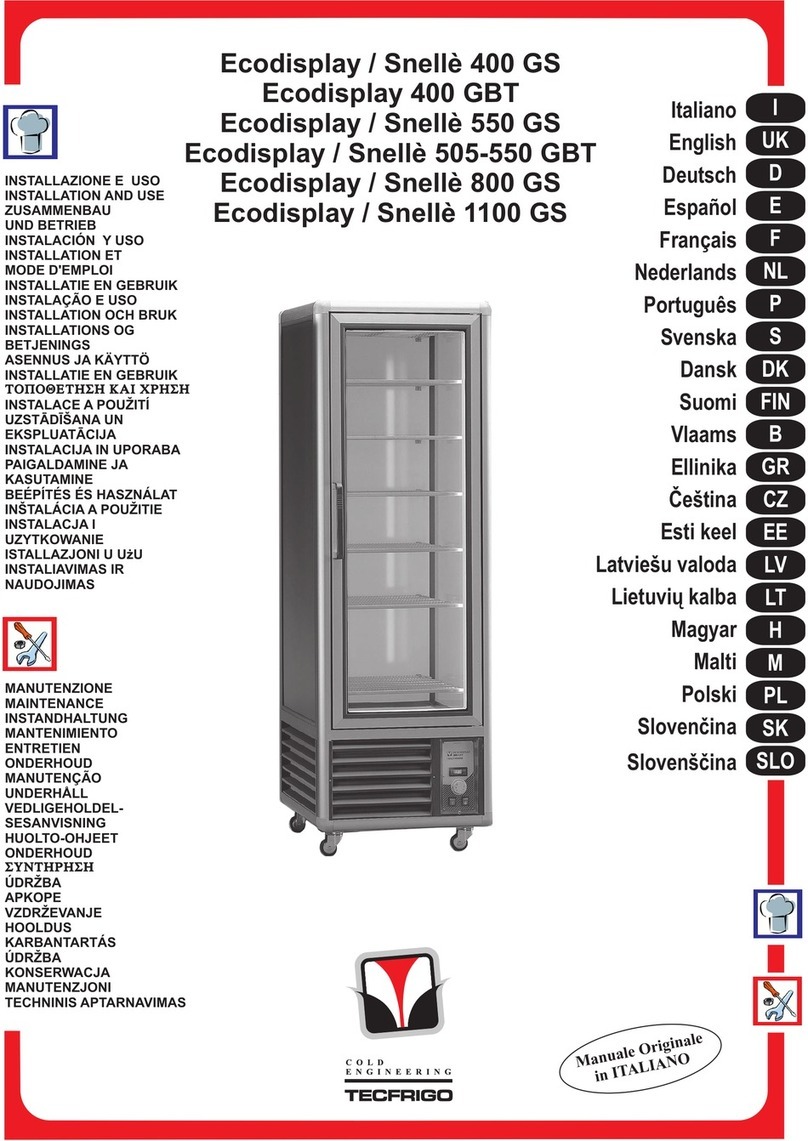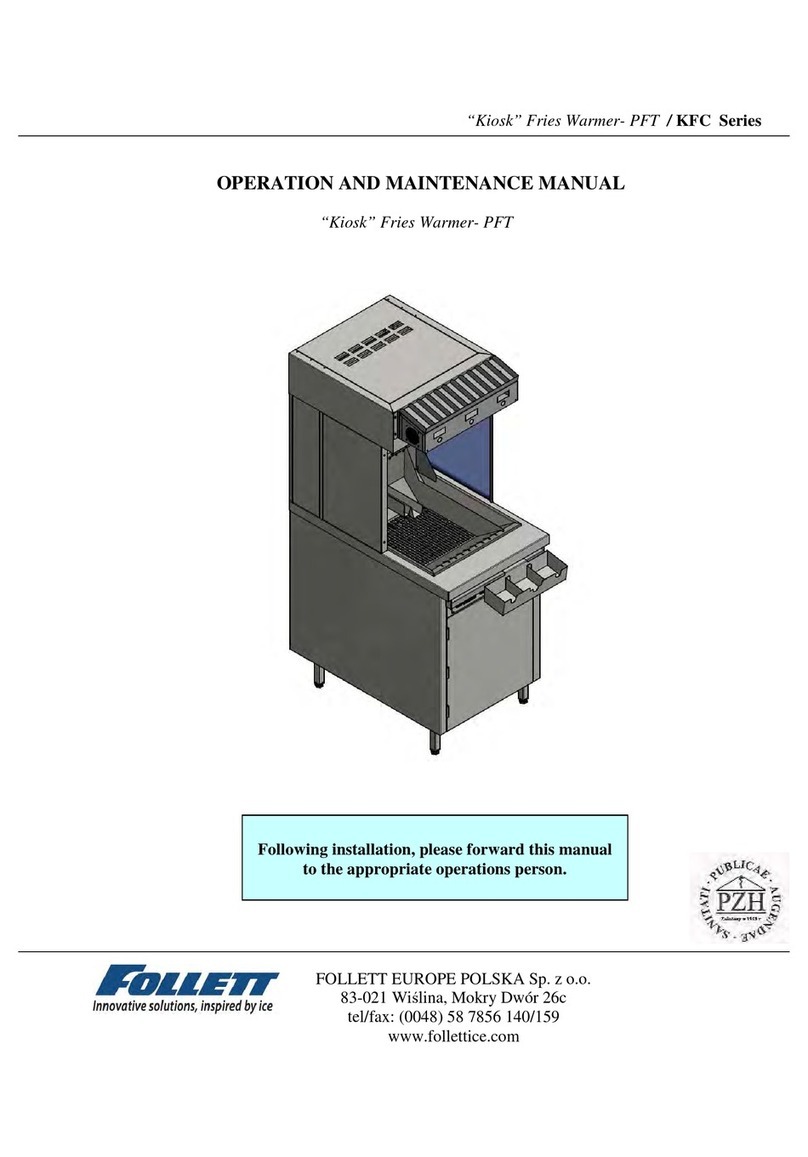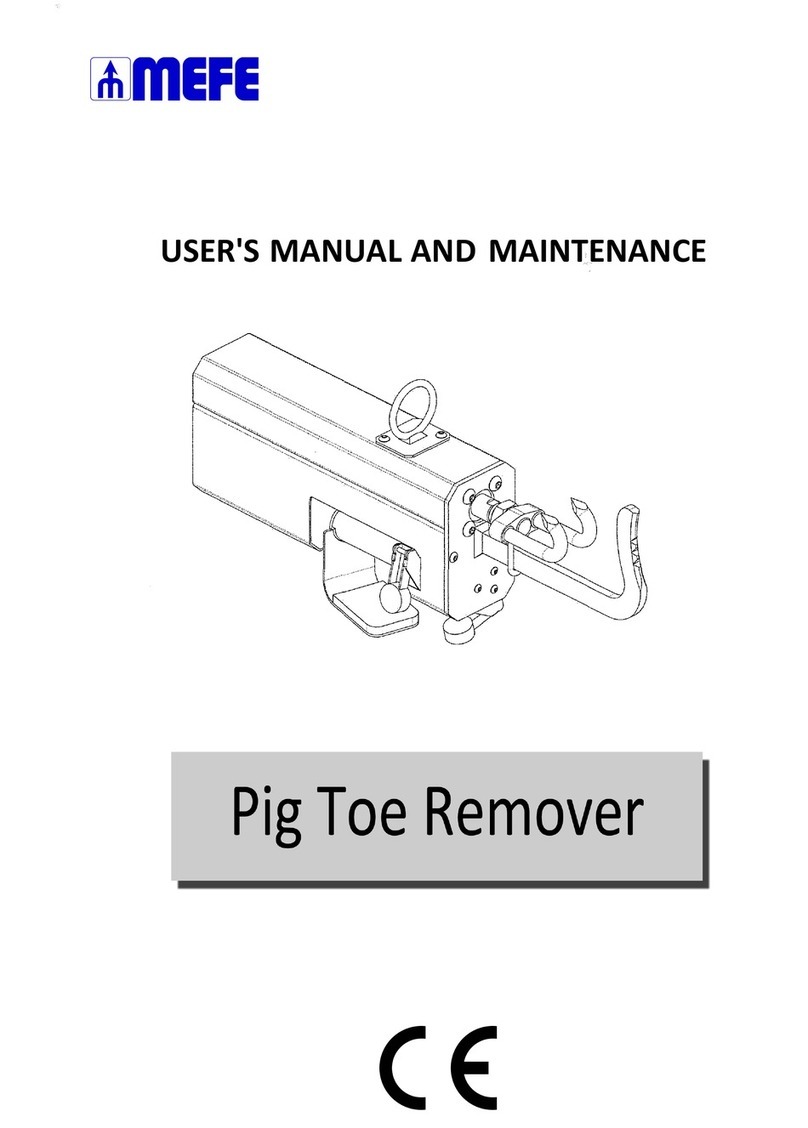
Operating Instructions Ascoline 700, AEF 04x
ascobloc Gastro-Gerätebau GmbH 01156 Dresden, Grüner Weg 29 Germany
Tel. +49 351 4533-0 Fax: +49 351 4537-339 E-mail: Service@ascobloc.de BA-AEF04x_EN , 12.11.2014
Subject to change without notice!
3
Before beginning the installation work, it should be checked that the mains voltage, mains type and the
current rating of the circuit breaker match the values given on the name plates. An isolating device in
the customer's scope of supply that is effective on all poles must be provided, e.g. contact breakers with
at least 3 mm contact gaps, so that the equipment is disconnected from the power supply during repair
and installation work. Connection to an equipotential bonding system is available (check effectiveness).
Do not sharply bend or crush mains cables or damage on sharp edges and route them so that they
cannot come in contact with hot parts. The power supply cable must be led through the equipment, fully
sheathed, from the screwed connection to the entry of the terminal box. The appliance is intended for
a permanent connection; connection via plug and socket is not permitted
4. Installation
4.1 Setting up
Do not set up the equipment next to walls, kitchen furniture, and decorations or similar which are made
of flammable materials. Otherwise there is danger of fire. See connection diagram with equipment
description for minimum distance. Local fire protection regulations must be kept to absolutely!
The equipment must be set up absolutely horizontal (use spirit level for alignment). Equipment with
adjustable feet can easily compensate for unevenness in the floor (+/- 20 mm) by turning the bottom
ends of the feet. If set up on a plinth, this is to have shims fitted underneath to compensate for
unevenness, if required.
The layout of forced convection air systems is only to be carried out by appropriate experts.
These instructions are to be handed to the owner-operator once the installation work is completed. The
owner-operator is to be instructed on how the equipment functions, its correct handling and the safety
regulations.
4.1.1 Free-standing set-up
If the equipment is to be set up on its own, suitable means are to be used to protect it against tilting and
shifting.
4.1.2 Setting them up in groups or blocks
When setting up in groups or blocks, the equipment must be joined together by suitable connecting
elements. This is for the sake of hygiene. Observe equipment setting-up sheets, leaflets or installation
plan. When installing in other kitchens, select the appropriate accessories from the leaflets.
4.2 Connections
Details of connections for the media can be taken from the accompanying connection diagram and
equipment description. Check whether the size and position of the electrical connections of the
customer side correspond to the information in the connection plan, equipment description or
installation plan.
The terminal box for the connections is located behind the front panel A (see data sheet). Make the
connections as shown in the annex or in the connection diagram accompanying the equipment. The
number of the connection diagram is to be found on the type plate. Once the electrical connections
have been made, close the cover of the terminal box and screw the front panel in place again.
4.2.1 Free-standing appliances
The connections can be made from below or from the rear from a closed installation space. With the
connection from below, the pipe length must be 50 mm above the floor surface.
4.2.2 Connection from the rear when equipment on a plinth
The penetrations are to be made in compliance with the known DIN and VDE regulations.
The connections can be through the rear wall (see illustration for dimensions).
